Popular Conditions & Diets
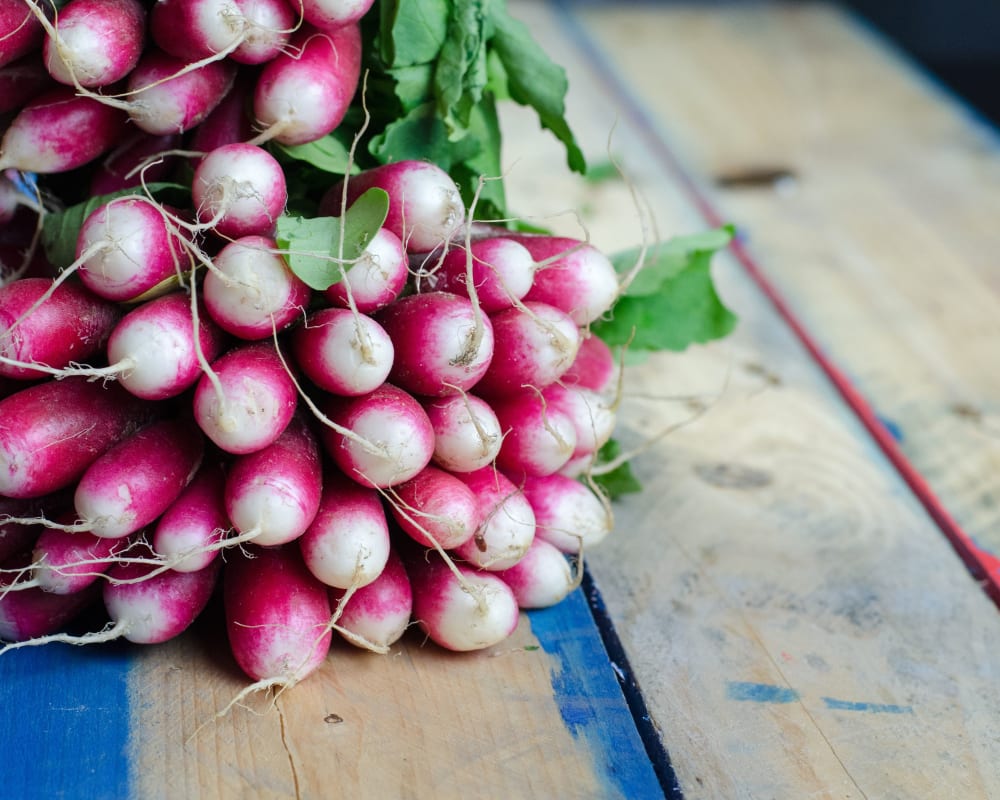
It is something of a crime that in all its glorious incarnations, the mighty radish goes generally ignored in North America. The balance of our recipes and the health of our bodies are the losers in this glaring omission.
In truth, the radish is not a vegetable but a world of vegetables. They all have their own thing going on. We’ve already sung the praises of the raphanus sativus as a group, now let’s take a closer look at three of the radish family’s most outstanding members.
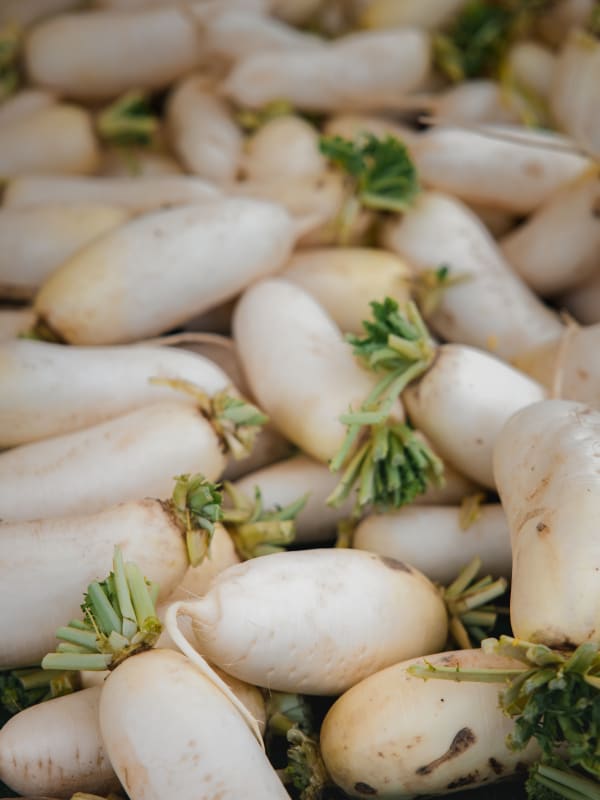
(Raphanus sativus var. Longipinnatus)
The Japanese word daikon translates into big root, and these tubers are native to East Asia. The sweet and peppery flavours of daikon radish, whether raw, pickled, or paired with cabbage and fermented in classic kimchi, add a welcome tang to anything rich or heavy.
When cruciferous veggies like radishes are chopped or bruised, the glucosinolates they contain are enzymatically converted to supremely powerful mega-antioxidants called isothiocyanates.
Research indicates that thanks to these isothiocyanates, eating cruciferous veggies like kale, broccoli, cabbage, bok choi, and radishes can significantly contribute to a cancer-free life.
Two isothiocyanates (GRH-ITC and GRE-ITC) from daikons have received increasing attention for dramatically reducing tumour growth without affecting normal human cells. However, this effect was found to be from a full-spectrum daikon extract than from the isolated isothiocyanates. In other words, respect the chemistry, but eat the whole food!
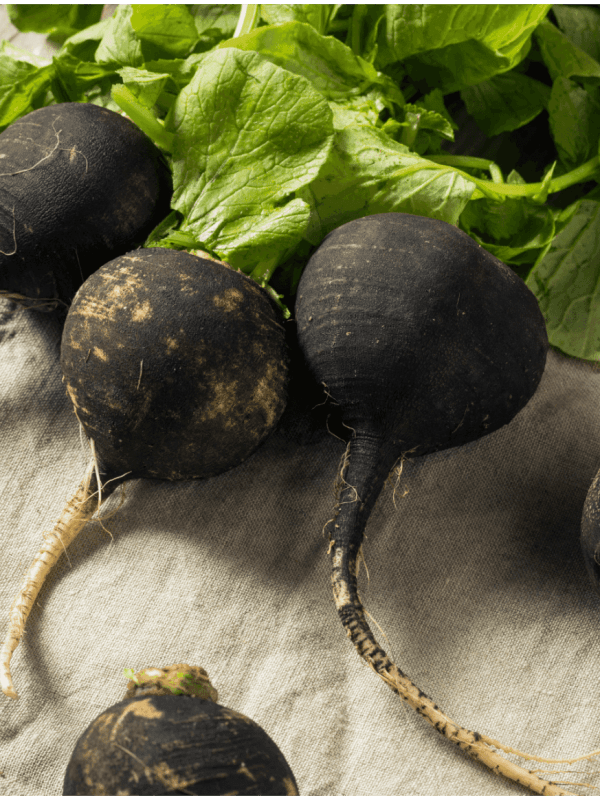
(Raphanus sativus var. Niger)
Like any bitter food, radishes are friendly to bile flow and liver function. But the black radish is a liver food par excellence, offering significant protection for our beloved detox engine from nutrient deficiencies, toxic exposure, inflammation, and diseases like non-alcoholic fatty liver disease (NAFLD).
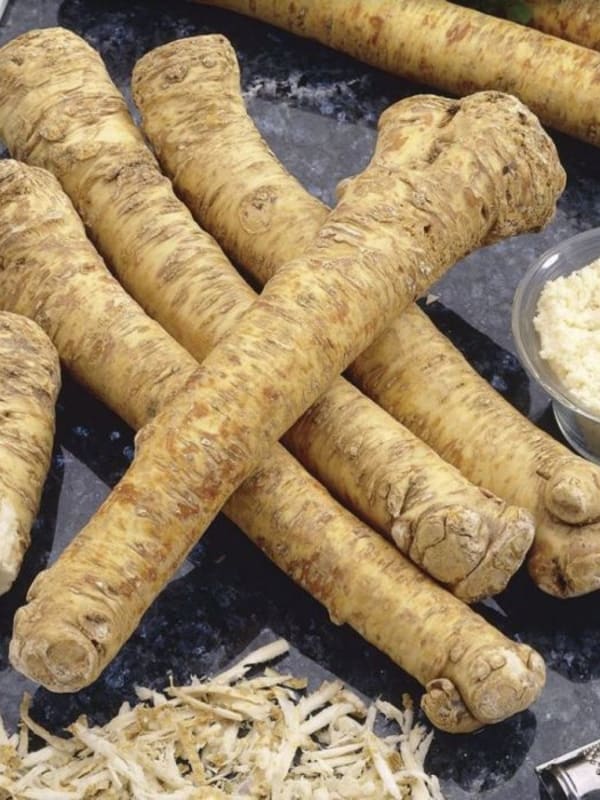
(Armoracia rusticana)
The spiciest of them all, horseradish is not even, technically, a radish. But, like all proper radishes, it is a cruciferous veggie in the brassica family, sharing a relation with kohlrabi, watercress, kale, and the rest.
Horseradish has 10 times more glucosinolates than broccoli, so even a little garnish goes a long way. Aside from the glucosinolates, horseradish is loaded with vitamins and minerals, it actually has three times more vitamin C than citrus fruits.
The inimitable cold burn of horseradish’s sinigrin almost resembles camphor, like nature’s internal Tiger Balm. Unsurprisingly, it boosts circulation and has been used topically as a poultice to kill pain for hundreds of years.
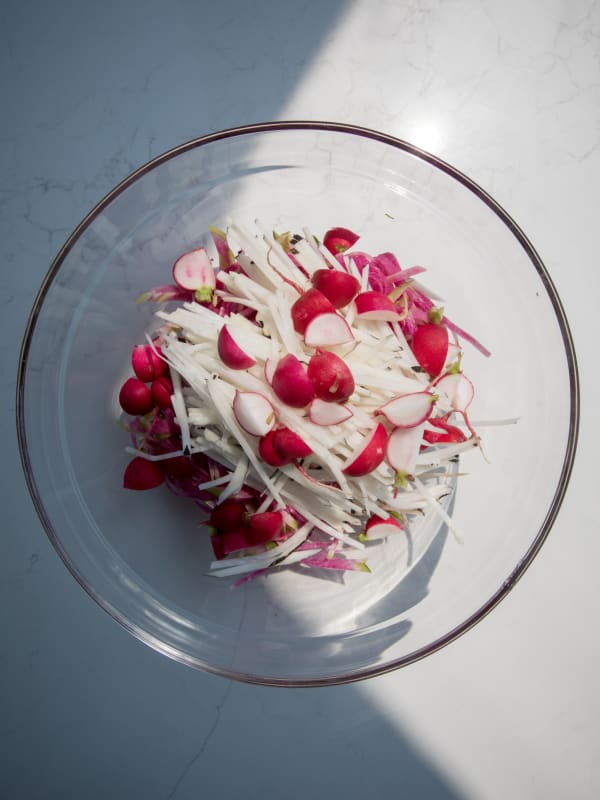
Daikon, black radishes, and horseradish are powerful functional foods associated with longevity and optimal health. In many cultures, where side dishes like kimchi, pickled daikon, and wasabi are standard accouterments, this news may be an unneeded encouragement to maintain the radish-heavy status quo. To others, it will hopefully be a wake-up call to take a walk on the smelly side.
Agneta, R., Möllers, C., & Rivelli, A. R. (2013). Horseradish (Armoracia Rusticana), a neglected medical and condiment species with a relevant glucosinolate profile: A Review. Genetic Resources and Crop Evolution, 60(7), 1923–1943. https://doi.org/10.1007/s10722-013-0010-4
Ahn, M., Kim, J., Choi, Y., Ekanayake, P., Chun, J., Yang, D., Kim, G.-O., & Shin, T. (2019). Fermented black radish (Raphanus sativus L. var. niger) attenuates methionine and choline deficient diet-induced nonalcoholic fatty liver disease in mice. Food Science & Nutrition, 7(10), 3327–3337. https://doi.org/10.1002/fsn3.1200
Barillari, J., Iori, R., Papi, A., Orlandi, M., Bartolini, G., Gabbanini, S., Pedulli, G. F., & Valgimigli, L. (2008). Kaiware daikon (Raphanus sativus L.) extract: A naturally multipotent chemopreventive agent. Journal of Agricultural and Food Chemistry, 56(17), 7823–7830. https://doi.org/10.1021/jf8011213

Astoundingly, the enzyme profile of daikon radish juice closely resembles that of the human digestive system. Hence, combining daikon with proteins can improve amino acid absorption and support the metabolism of fats and carbohydrates.
But daikons have much more to offer than acidity and digestive ease: they are loaded with fascinating chemicals like quercetin, glucosinolates and ferulic acids. These compounds assist with asthma and respiratory issues and support the bone structure, especially in tandem with daikon’s generous endowments of calcium and vitamin C.
Sprouts of daikon radish are being hotly researched for their superlative abundance of polyamines like spermine, spermidine, and agmatine, which already account for a new wave of designer biohacking supplements and are sure to get more attention in years to come for their remarkable life extension properties.
Spanish black radishes are particularly rich in a glucosinolate unique to radishes: glucoraphasatin. The byproducts of glucoraphasatin are powerful activators of phase 1 and 2 liver detoxification, helping the body rid itself of various cellular toxins.
For avoiding gallstones, black radishes may be the best food out there. In a study on mice fed a lithogenic diet (a diet designed to cause gallstone formation), six days of black radish juice consumption eradicated existing gallstones.
This remarkable effect is due to the powerful radish antioxidants that induce liver detoxification and prevent cholesterol from congealing and crystallizing in the gallbladder. Research is ongoing to illuminate the exact mechanisms by which black radishes treat and prevent gallstones- but there is no debate over whether or not they do.
As mentioned, all brassicas contain glucosinolates, the cancer-fighting, life-extending, and highly reactive sulphurous compounds that are as smelly as they are healthy. Pungence in any food, like the spiciness of raw garlic, or the sting in your eyes from cutting onions, or the way mustard seems to prickle the tongue, is a giveaway that sulphur is in the picture.
And remember that the sulphurous glucosinolates that make these veggies so intense to the senses are also singly responsible for putting them on the map as superfoods.
Horseradish’s primary glucosinolate is called sinigrin. When we chew or cut into the root, sinigrin rapidly converts into its volatile, intense, and nose-tingling metabolites. Vinegar or oil can be used to stop this reaction from continuing, effectively preserving the spicy horseradish heat at its maximum intensity.
As a potent antimicrobial, its famous alliance with prime rib has roots in preventing meat spoilage by inhibiting the growth of nasty bugs.
And it can clear out your sinuses!
Incorporating more radishes into your diet is a chance to stimulate your digestion, detoxification, and breathing- not to mention your tastebuds!
Bell, L., Kitsopanou, E., Oloyede, O. O., & Lignou, S. (2021). Important odorants of four Brassicaceae species, and discrepancies between glucosinolate profiles and observed hydrolysis products. Foods, 10(5), 1055. https://doi.org/10.3390/foods10051055
Castro-Torres, I. G., De la O-Arciniega, M., Gallegos-Estudillo, J., Naranjo-Rodríguez, E. B., & Domínguez-Ortíz, M. Á. (2013). Raphanus sativus L. var niger as a source of Phytochemicals for the Prevention of Cholesterol Gallstones. Phytotherapy Research, 28(2), 167–171. https://doi.org/10.1002/ptr.4964
Castro-Torres, I. G., Naranjo-Rodríguez, E. B., Domínguez-Ortíz, M. Á., Gallegos-Estudillo, J., & Saavedra-Vélez, M. V. (2012). Antilithiasic and hypolipidaemic effects of Raphanus sativus L. var. niger on mice fed with a lithogenic diet. Journal of Biomedicine and Biotechnology, 2012, 1–8. https://doi.org/10.1155/2012/161205
Evans, M., Paterson, E., & Barnes, D. M. (2014). An open label pilot study to evaluate the efficacy of Spanish black radish on the induction of phase I and phase II enzymes in healthy male subjects. BMC Complementary and Alternative Medicine, 14(1). https://doi.org/10.1186/1472-6882-14-475
Hanlon, P. R., Webber, D. M., & Barnes, D. M. (2007). Aqueous Extract from Spanish Black Radish (Raphanus sativus L. Var. niger) Induces Detoxification Enzymes in the HepG2 Human Hepatoma Cell Line. Journal of Agricultural and Food Chemistry, 55(16), 6439–6446. https://doi.org/10.1021/jf070530f
Jeon, H., Yang, D., Lee, N. H., Ahn, M., & Kim, G. (2020). Inhibitory effect of black radish (Raphanus sativus L. var. niger) extracts on lipopolysaccharide-induced inflammatory response in the mouse monocyte/macrophage-like cell line raw 264.7. Preventive Nutrition and Food Science, 25(4), 408–421. https://doi.org/10.3746/pnf.2020.25.4.408
Kiechl, S., Pechlaner, R., Willeit, P., Notdurfter, M., Paulweber, B., Willeit, K., Werner, P., Ruckenstuhl, C., Iglseder, B., Weger, S., Mairhofer, B., Gartner, M., Kedenko, L., Chmelikova, M., Stekovic, S., Stuppner, H., Oberhollenzer, F., Kroemer, G., Mayr, M., … Willeit, J. (2018). Higher spermidine intake is linked to lower mortality: A prospective population-based study. The American Journal of Clinical Nutrition, 108(2), 371–380. https://doi.org/10.1093/ajcn/nqy102
Kralj Cigić, I., Rupnik, S., Rijavec, T., Poklar Ulrih, N., & Cigić, B. (2020). Accumulation of agmatine, spermidine, and spermine in sprouts and microgreens of alfalfa, fenugreek, lentil, and daikon radish. Foods, 9(5), 547. https://doi.org/10.3390/foods9050547
Kuroda, R., Kazumura, K., Ushikata, M., Minami, Y., & Kajiya, K. (2018). Elucidating the improvement in vascular endothelial function from Sakurajima Daikon and its mechanism of action: A comparative study with raphanus sativus. Journal of Agricultural and Food Chemistry, 66(33), 8714–8721. https://doi.org/10.1021/acs.jafc.8b01750
Nakamura, Y., Iwahashi, T., Tanaka, A., Koutani, J., Matsuo, T., Okamoto, S., Sato, K., & Ohtsuki, K. (2001). 4-(Methylthio)-3-butenyl isothiocyanate, a principal antimutagen in daikon (raphanus sativus; Japanese white radish). Journal of Agricultural and Food Chemistry, 49(12), 5755–5760. https://doi.org/10.1021/jf0108415
Papi, A., Orlandi, M., Bartolini, G., Barillari, J., Iori, R., Paolini, M., Ferroni, F., Grazia Fumo, M., Pedulli, G. F., & Valgimigli, L. (2008). Cytotoxic and antioxidant activity of 4-methylthio-3-butenyl isothiocyanate from Raphanus sativus L. (Kaiware daikon) sprouts. Journal of Agricultural and Food Chemistry, 56(3), 875–883. https://doi.org/10.1021/jf073123c
Rani, I., Akhund, S., & Abro, H. (2008). Antimicrobial Potential of Seed Extract of Raphanus Sativus. Institute of Botany, University of Sindh, Jamshoro . Staughton, J. (2021, June 24). 9 Surprising Benefits of Daikon. Organic Facts. https://www.organicfacts.net/health-benefits/vegetable/daikon.html
Veitch, N. C. (2004). Horseradish peroxidase: A modern view of a classic enzyme. Phytochemistry, 65(3), 249–259. https://doi.org/10.1016/j.phytochem.2003.10.022
Walters, S. (2021). Horseradish: A neglected and underutilized plant species for improving human health. Horticulturae, 7(7), 167. https://doi.org/10.3390/horticulturae7070167